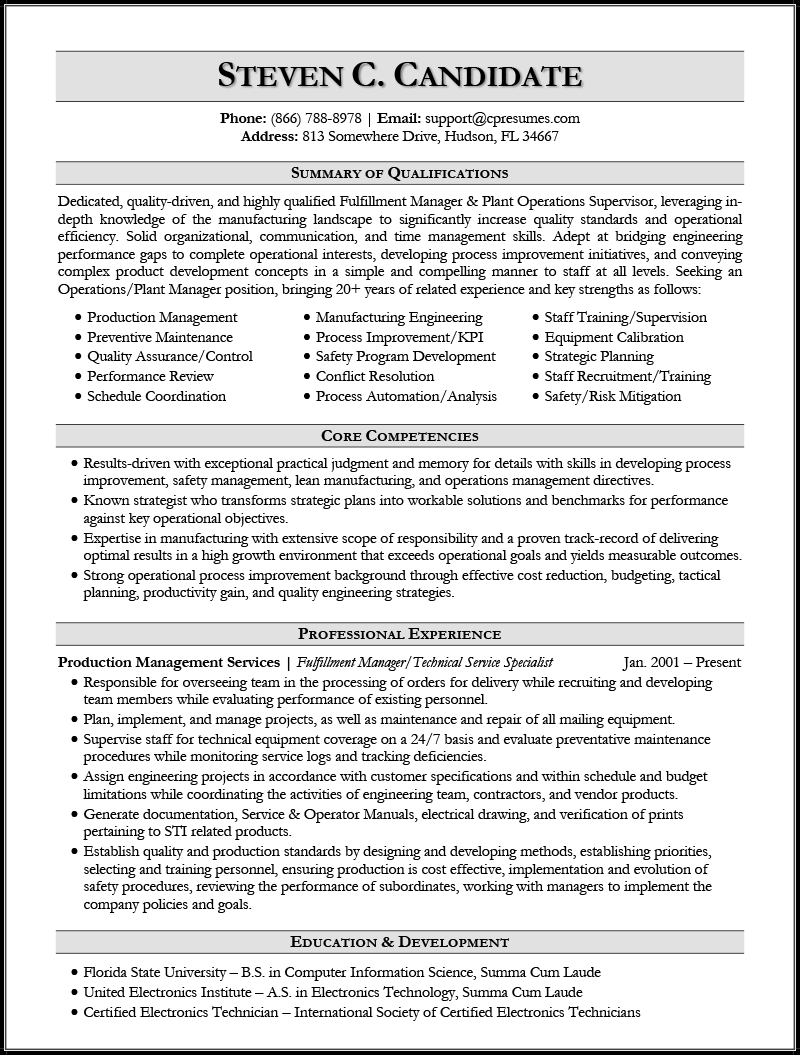Production Workers
Production occupations consist of Assemblers, Fabricators, Food Processors, Machinists, Machine Workers, Power Plant Operators, Quality Control Inspectors, and many more titles. The manufacturing industry is projected to decline at a rate of 4% by the year 2029, subtracting approximately 423,200 jobs from the workforce according to the U.S. Bureau of Labor Statistics. The median salary for a production worker is around $37,440 per year, which is lower than the median annual wage for all occupations.
Manufacturing is a constantly evolving industry with technological advancements that are rapidly automating processes and creative massive shifts in the job market. Employees are being laid off and replaced by robotic systems, while new jobs are being created to provide maintenance on these robotic systems. This creates a hybrid industry sector in a sense, merging manufacturing with information technology.
Below is an example of a Manufacturing Resume we have prepared for one of our clients, Steven.

Conclusion of this Manufacturing Resume
Steven is a Fulfillment Manager & Plant Operations Supervisor who needed a strategic approach to elevate his manufacturing career. With a strong operational process improvement background, Steven is able to continuously reduce costs, maintain budgets, and ensure quality through direct leadership of staff. Below are a few highlights from Steven's resume.
- Responsible for overseeing team in the processing of orders for delivery while recruiting and developing team members while evaluating performance of existing personnel.
- Supervise staff for technical equipment coverage on a 24/7 basis and evaluate preventative maintenance procedures while monitoring service logs and tracking deficiencies.
- Assign engineering projects in accordance with customer specifications and within schedule and budget limitations while coordinating the activities of engineering team, contractors, and vendor products.
Careers Plus Resumes can help you showcase your ability to establish quality and production standards while driving cost-saving initiatives and adapting to new technological advancements in the manufacturing industry.
